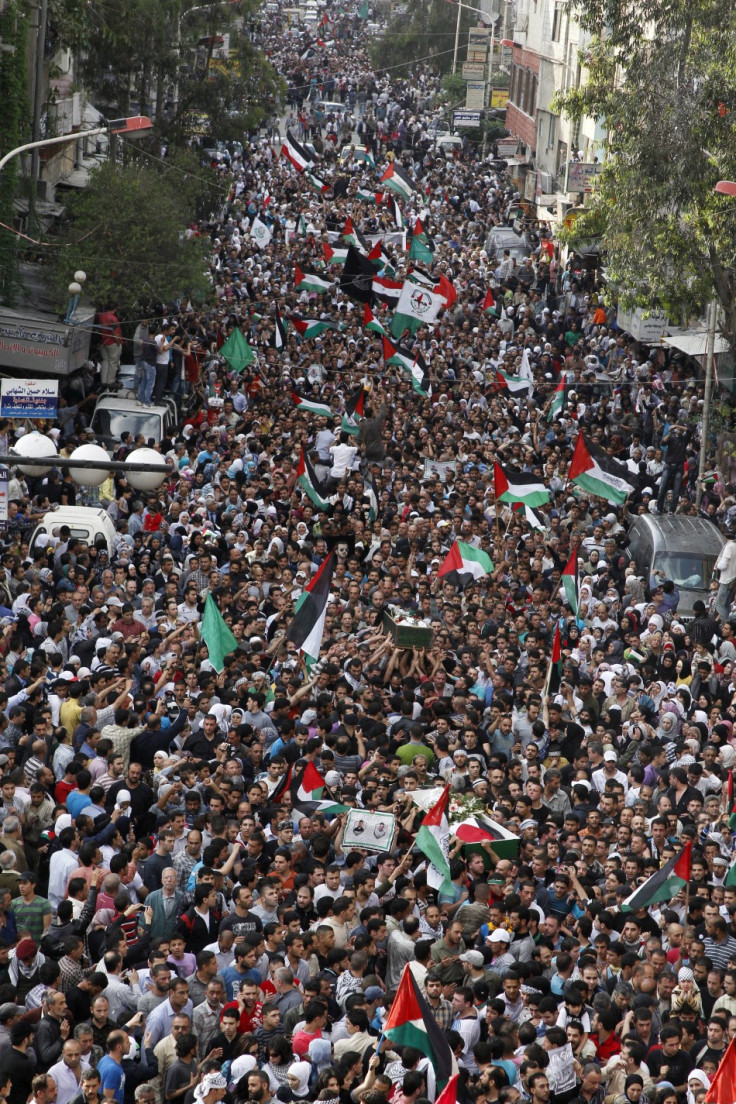The Arab spring, Palestine, Israel and Jerusalem as symbol of divisions

US president Barack Obama has just called Israelis and Palestinians to go back to the negotiating table, but with past peace processes seen as fragile and not very efficient, the several Israeli-Palestinian talks and deals have become renowned for their longevity and chronic inability to find a way to end the conflict. The recent so called 'Arab spring revolution' has had important impacts in Palestine as leader and people alike seem decided to push for the establishment and international recognition of the state of Palestine. So while in theory both states are seeking for a solution based on a negotiated agreement over the borders of what will then become two sovereign states, in reality time goes by, with the conflict's first casualties being civilians. How do people cope with the failure to reach an agreement and how has the conflict led to a separation of two populations?
Has the Arab spring spread to Palestine?
Thousands of protesters marched on Israel's northern borders on Sunday 14<sup>th of May, bearing flags, stones, and forcing the international community to realise that after being over shadowed by other Arab countries, the Palestinian issue is back on the Arab agenda.
The explosion of people in the streets but also the rise in tensions and violence was notable. Hundreds of Syrian demonstrators managed to tear down the border fence and cross into the Israeli-occupied Golan Heights. It was the first hostile breach of the border in almost four decades. In Lebanon, at least 10 protesters were killed, apparently by Israeli fire, as they pelted the border fence with stones.
The date of these incidents is however of great importance as they were part of a region-wide effort to mark the anniversary of the Nakba, that Palestinians associate with the creation of the state of Israel in 1948. The border demonstrations and riots in the West Bank and Gaza aside, there were also pro-Palestinian demonstrations in countries such as Jordan and Egypt. The 14<sup>th of May has since then been synonymous with demonstrations and resistance against the Israeli forces, however this year the wind of revolution coming from the Arab spring seem to have bolstered the protestors moral. After all if Ben Ali and Mubarak were ousted, and if the people of Bahrain and Syria were willing to suffer lose of life to voice their opinion, maybe the dream of a Palestinian state was not that unreachable. The international community has also been more vocal about the need to stop the conflict but also the necessity to establish Palestine as a sovereign state. The situation has thus rapidly changed since only a few months ago, it seemed that Israelis and Palestinians at first glance, had been left untouched by the revolutionary wave that swept the Middle East.
Jerusalem a city divided
While the world is waiting to see if any real, concrete and solid progress over peace talks will be made, civilians are the main bearers of the consequences of the conflict. The impact of the conflict in Jerusalem has been particularly profound. Partitioned in 1948 into an Israeli-controlled West Jerusalem and a Jordan-controlled east Jerusalem, it remained divided by the 'green line' for nineteen years. However since the Israeli occupation of the West Bank in 1967, East Jerusalem was gradually integrated into the western part, which is still controlled by the Israeli state.
Jerusalem is a key point of controversy in the negotiations and three main issues posit a problem. The first issue concerns how much an agreement should take into account the UN security council 242 resolution which states that Israel should retire from the 'green line'. The second point concerns the extent to which the negotiations should take into account the urban developments that have occurred in East Jerusalem since 1967 and Israel's will to control the city's Jewish holy sites that mainly remain in the East. Finally the third point relates to the type of governance needed in the city to protect the interests of both Israeli and Palestinians.
Meanwhile the Israeli occupation of Jerusalem has led to the establishment of contested measures such as a land acquisition policy, a fragmentation of Palestinian areas, restrictions of mobility and residency...leading to a separation of the two populations. As a clear consequence of the conflict and division of the city, all the inhabitants have now seen an increase in tensions and suspicion, a lack of infrastructure and possibilities of development in the city and an increase in poverty.
Jerusalem is obviously not the only area affected by the conflict, as the Gaza strip is another example of the burden inflicted on civilians, however it still remains a very contentious point in the peace negotiation, that will at one point need to be dealt with for a peaceful cohabitation between Israel and Palestine to become a reality.
© Copyright IBTimes 2024. All rights reserved.





